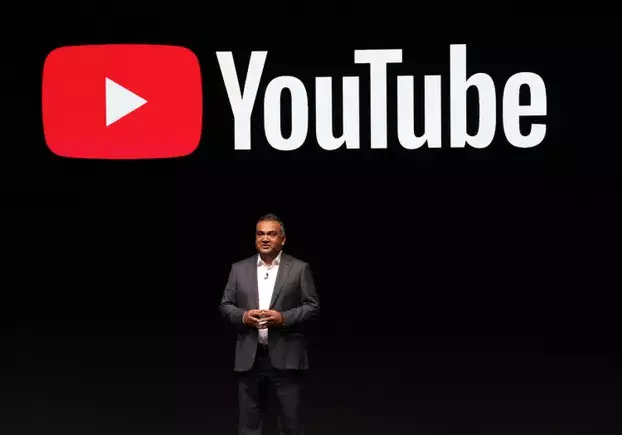YouTube has long been a bastion of creativity and self-expression, but the impending integration of Google’s VEO generative AI tools marks a significant turning point for content creators. Set to roll out later this year, these tools will empower creators to craft engaging YouTube Shorts with unprecedented ease. This development transcends merely enhancing video quality; it confronts the core of what it means to be a creator in the digital age. As YouTube celebrates its 20th anniversary, the implications of this technological advance are twofold: it offers enhanced capabilities for creators while simultaneously raising questions about originality and creativity.
During recent discussions at the Cannes Lions Festival, YouTube CEO Neal Mohan unveiled these advancements alongside compelling usage insights. The statistics are staggering: YouTube Shorts now garner over 200 billion views daily, a remarkable jump from the 70 billion seen just a year ago. Such numbers illustrate not only the platform’s monumental growth but also hint at the transformative potential of AI in democratizing content creation. Mohan’s remarks on the upcoming Veo 3 tools encapsulate an optimistic vision where “everyone can explore new creative lanes.” However, this raises crucial questions—will a flood of AI-generated content dilutes the originality that makes platforms like YouTube special?
The Quality Quandary: Opportunity or Overload?
While the capabilities of tools like Veo 3 promise to broaden creative horizons, skepticism persists. The reality is that access to advanced technology does not inherently guarantee quality—this is where the true artistry of storytelling and humor becomes paramount. As we brace for an influx of AI-generated content, it’s vital to recognize that creativity remains an irreplaceable factor. We may find ourselves sifting through an avalanche of uninspired output, which could diminish the unique voices of talented creators.
This does not mean the tools should not be embraced. Rather, it underscores the need for a discerning audience. As the technology becomes more accessible, a blend of human creativity and AI assistance may carve out a new path for content development. Creators who possess the story-telling acumen could harness these tools to manifest their visions in ways previously inconceivable. It is crucial for users to identify their own creative signature, ensuring that the AI remains a collaborator and not a crutch.
The Fascinating Data Landscape
Alongside the announcement of the new AI tools, Mohan presented thought-provoking usage statistics that reflect a shifting landscape in viewer engagement. The data indicates that over a billion hours of YouTube content is streamed daily on TVs—suggesting that the platform is not only a video sharing site but a formidable competitor to traditional television. Connected TV (CTV) is proving to be a gateway for lengthy content, with audiences increasingly tuning in for full-length films and documentaries versus short clips alone.
These statistics emphasize a palpable transition in how users consume online content. While Shorts may thrive in popularity, longer formats are also carving a niche for themselves. This evolution points to a more diverse content ecosystem, with creators and marketers needing to adapt their strategies to cater to varied viewer preferences. The intersection of short-form and long-form content is a rich playground for experimentation, offering endless potential for narrative exploration.
The Growing Podcast Movement on YouTube
Interestingly, YouTube’s podcast viewer statistics reveal another layer to this narrative. With one billion podcast viewers each month, YouTube has positioned itself as a significant player in the podcasting realm. This growth suggests that viewers are seeking multidimensional engagement, gravitating toward rich audio experiences alongside visual content. Such cross-platform content consumption hints at a cultural shift where diversified content offerings are revered, showcasing the necessity for creators to continually evolve their craft.
This convergence of formats suggests that marketers and brands should consider innovative approaches when engaging with audiences on YouTube. Understanding the dynamics of both Shorts and lengthy videos, along with podcasts, can enhance outreach efforts, allowing for a much more connected consumer experience.
The Role of Trends in Shaping Creative Opportunities
As YouTube continues to advance, a keen eye on emerging trends will empower creators to capitalize on future opportunities. Indications show that not only are videos exceeding 60 minutes gaining traction, but a growing number of viewers are gravitating toward content that emphasizes gaming culture. This rise reflects not just changing viewer preferences but the power of cultural phenomena to influence content creation on platforms like YouTube. For potential creators and marketers, acknowledging these trends and adapting accordingly is crucial to maintaining relevance in an increasingly competitive landscape.
YouTube stands at a critical juncture where the integration of generative AI might paradoxically challenge traditional creative processes while offering groundbreaking avenues for expression. As much as the technology promises convenience, it is the ideological shift towards a hybrid model of creation—where human imagination meets artificial intelligence—that will ultimately define the next era of YouTube. It’s an exhilarating time, indeed, for creators willing to navigate this new frontier.

